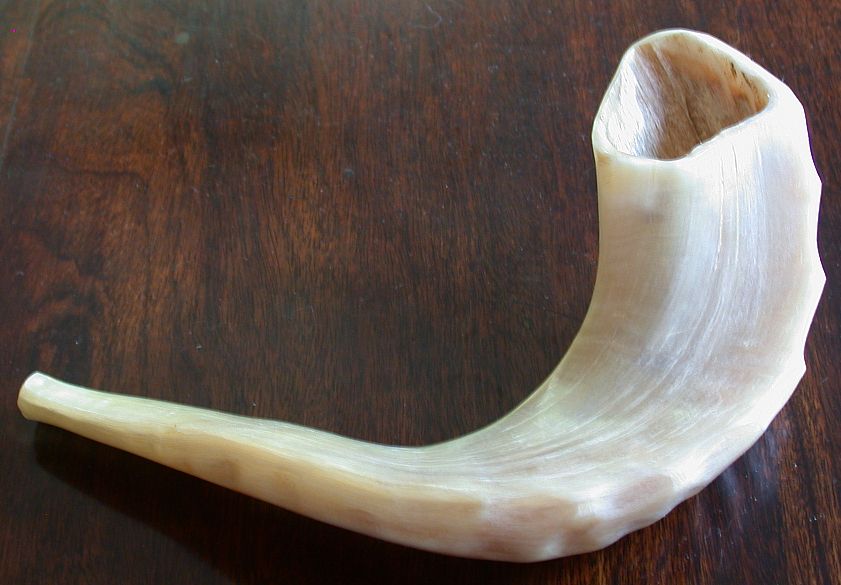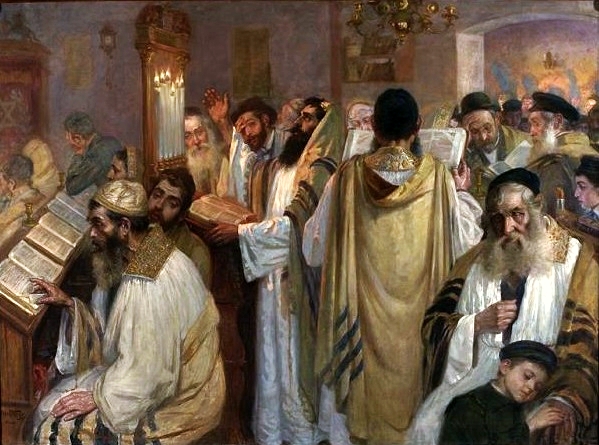|
Congregation Beth Jacob Ohev Sholom
Congregation Beth Jacob Ohev Sholom (also known as "Congregation Beth Jacob Ohev Shalom") ("House of Jacob Lover of Peace") is an Orthodox synagogue located at 284 Rodney Street in Williamsburg, Brooklyn, New York. It is the oldest Orthodox congregation on Long Island (including Brooklyn and Queens), and one of the last remaining non-Hasidic Jewish institutions in Williamsburg. The congregation was formed in 1869 by German Jews as an Orthodox breakaway from an existing Reform congregation. It constructed its first building on Keap Street in 1870. In 1904 it merged with Chevra Ansche Sholom, and took the name Congregation Beth Jacob Anshe Sholom. The following year it constructed a new building at 274–276 South Third Street, designed by George F. Pelham. The congregation's building was expropriated and demolished to make way for the Brooklyn-Queens Expressway in the 1950s. It combined with another congregation in a similar situation, and, as Congregation Beth Jacob Ohev Sholom, ... [...More Info...] [...Related Items...] OR: [Wikipedia] [Google] [Baidu] |
Brooklyn
Brooklyn () is a borough of New York City, coextensive with Kings County, in the U.S. state of New York. Kings County is the most populous county in the State of New York, and the second-most densely populated county in the United States, behind New York County (Manhattan). Brooklyn is also New York City's most populous borough,2010 Gazetteer for New York State . Retrieved September 18, 2016. with 2,736,074 residents in 2020. Named after the Dutch village of Breukelen, Brooklyn is located on the w ... [...More Info...] [...Related Items...] OR: [Wikipedia] [Google] [Baidu] |
Gabbai
A ''gabbai'' ( he, גבאי), also known as ''shamash'' (, sometimes spelled ''shamas'') or warden ( UK, similar to churchwarden) is a beadle or sexton, a person who assists in the running of synagogue services in some way. The role may be undertaken on a voluntary or paid basis. A ''shamash'' (literally 'servant') or ''gabbai'' can also mean an assistant to a rabbi (particularly the secretary or personal assistant to a Hasidic rebbe). In ma'amad, the Council of Elders (or "the board of directors") of the communities of Sephardi Jews, the position of ''gabbai'' was that of the treasurer. Etymology The word ''gabbai'' is Hebrew and, in Talmudic times, meant "collector of taxes or charity" or "treasurer". The term ''shamash'' is sometimes used for the ''gabbai'', the caretaker or "man of all work" in a synagogue. Duties While the specific set of duties vary from synagogue to synagogue, a gabbai's responsibilities will typically include ensuring that the religious services run ... [...More Info...] [...Related Items...] OR: [Wikipedia] [Google] [Baidu] |
High Holy Days
The High Holidays also known as the High Holy Days, or Days of Awe in Judaism, more properly known as the Yamim Noraim ( he, יָמִים נוֹרָאִים, ''Yāmīm Nōrāʾīm''; "Days of Awe") #strictly, the holidays of Rosh HaShanah ("Jewish New Year") and Yom Kippur ("Day of Atonement"); #by extension, the period of ten days including those holidays, known also as the Ten Days of Repentance (''Aseret Yemei Teshuvah''); or, #by a further extension, the entire 40-day penitential period in the Jewish year from Rosh Chodesh Elul to Yom Kippur, traditionally taken to represent the forty days Moses spent on Mount Sinai before coming down with the second ("replacement") set of the Tablets of Stone. Etymology The term High Holy Days most probably derives from the popular English phrase, “high days and holydays”. The Hebrew equivalent, "''Yamim Noraim''" ( he, ימים נוראים), is neither Biblical nor Talmudic. Professor Ismar Elbogen, author of “Jewish Liturgy in it ... [...More Info...] [...Related Items...] OR: [Wikipedia] [Google] [Baidu] |
Grand Street (Brooklyn)
Grand Street and Grand Avenue are the respective names of a street which runs through the boroughs of Brooklyn and Queens, New York City, United States. Originating in Williamsburg, Brooklyn, Grand Street runs roughly northeast until crossing Newtown Creek into Queens, whereupon Grand Street becomes Grand Avenue, continuing through Maspeth where it is a main shopping street, until reaching its northern end at Queens Boulevard in Elmhurst. The thoroughfare continues north and west beyond Queens Boulevard as Broadway until it terminates at Socrates Sculpture Park at the intersection of Vernon Boulevard in Astoria. Transportation Grand Avenue and Grand Street are served by the Q54, Q58, and Q59 buses, all operated by MTA New York City Bus. Broadway is served by the Q53 SBS and Q104 buses, both operated by MTA Bus. The Grand Street ( train) subway station serves the corner of Grand Street and Bushwick Avenue, while the Grand Avenue – Newtown ( trains) subway station is ... [...More Info...] [...Related Items...] OR: [Wikipedia] [Google] [Baidu] |
Jewish Holiday
Jewish holidays, also known as Jewish festivals or ''Yamim Tovim'' ( he, ימים טובים, , Good Days, or singular , in transliterated Hebrew []), are holidays observed in Judaism and by JewsThis article focuses on practices of mainstream Rabbinic Judaism. Karaite Judaism#The calendar, Karaite Jews and Samaritans#Samaritanism, Samaritans also observe the biblical festivals, but not in an identical fashion and not always at exactly the same time. throughout the Hebrew calendar. They include religious, cultural and national elements, derived from three sources: biblical '' mitzvot'' ("commandments"), rabbinic mandates, and the history of Judaism and the State of Israel. Jewish holidays occur on the same dates every year in the Hebrew calendar, but the dates vary in the Gregorian. This is because the Hebrew calendar is a lunisolar calendar (based on the cycles of both the sun and moon), whereas the Gregorian is a solar calendar. General concepts Groupings Certain ter ... [...More Info...] [...Related Items...] OR: [Wikipedia] [Google] [Baidu] |
Shabbat
Shabbat (, , or ; he, שַׁבָּת, Šabbāṯ, , ) or the Sabbath (), also called Shabbos (, ) by Ashkenazim, is Judaism's day of rest on the seventh day of the week—i.e., Saturday. On this day, religious Jews remember the biblical stories describing the creation of the heaven and earth in six days and the redemption from slavery and The Exodus from Egypt, and look forward to a future Messianic Age. Since the Jewish religious calendar counts days from sunset to sunset, Shabbat begins in the evening of what on the civil calendar is Friday. Shabbat observance entails refraining from work activities, often with great rigor, and engaging in restful activities to honour the day. Judaism's traditional position is that the unbroken seventh-day Shabbat originated among the Jewish people, as their first and most sacred institution. Variations upon Shabbat are widespread in Judaism and, with adaptations, throughout the Abrahamic and many other religions. According to ''halakha ... [...More Info...] [...Related Items...] OR: [Wikipedia] [Google] [Baidu] |
Halakha
''Halakha'' (; he, הֲלָכָה, ), also transliterated as ''halacha'', ''halakhah'', and ''halocho'' ( ), is the collective body of Jewish religious laws which is derived from the written and Oral Torah. Halakha is based on biblical commandments ('' mitzvot''), subsequent Talmudic and rabbinic laws, and the customs and traditions which were compiled in the many books such as the ''Shulchan Aruch''. ''Halakha'' is often translated as "Jewish law", although a more literal translation of it might be "the way to behave" or "the way of walking". The word is derived from the root which means "to behave" (also "to go" or "to walk"). ''Halakha'' not only guides religious practices and beliefs, it also guides numerous aspects of day-to-day life. Historically, in the Jewish diaspora, ''halakha'' served many Jewish communities as an enforceable avenue of law – both civil and religious, since no differentiation of them exists in classical Judaism. Since the Jewish Enlightenment (''Hask ... [...More Info...] [...Related Items...] OR: [Wikipedia] [Google] [Baidu] |
Jewish Services
Jewish prayer ( he, תְּפִלָּה, ; plural ; yi, תּפֿלה, tfile , plural ; Yinglish: davening from Yiddish 'pray') is the prayer recitation that forms part of the observance of Rabbinic Judaism. These prayers, often with instructions and commentary, are found in the ''Siddur'', the traditional Jewish prayer book. Prayer, as a "service of the heart", is in principle a Torah-based commandment. It is not time-dependent and is mandatory for both Jewish men and women. However, the rabbinic requirement to recite a specific prayer text does differentiate between men and women: Jewish men are obligated to recite three prayers each day within specific time ranges (''zmanim''), while, according to many approaches, women are only required to pray once or twice a day, and may not be required to recite a specific text. Traditionally, three prayer services are recited daily: * Morning prayer: ''Shacharit'' or ''Shaharit'' (, "of the dawn") * Afternoon prayer: ''Mincha' ... [...More Info...] [...Related Items...] OR: [Wikipedia] [Google] [Baidu] |
Yom Kippur
Yom Kippur (; he, יוֹם כִּפּוּר, , , ) is the holiest day in Judaism and Samaritanism. It occurs annually on the 10th of Tishrei, the first month of the Hebrew calendar. Primarily centered on atonement and repentance, the day's observances consist of full fasting and ascetic behavior accompanied by intensive prayer as well as sin confessions (traditionally inside of a synagogue). Alongside the related holiday of Rosh HaShanah, Yom Kippur is one of the two components of the "High Holy Days" of Judaism. Etymology () means "day" in Hebrew and () is translated to "atonement". The common English translation of Yom Kippur is Day of Atonement; however, this translation lacks precision. The name Yom Kippur is based on the Torah verse, "...but on the 10th day of the seventh month it is the day of ''kippurim'' unto you..." The literal translation of ''kippurim'' is cleansing. Yom Kippur is a Jewish day to atone for misdeeds and become cleansed and purified from the ... [...More Info...] [...Related Items...] OR: [Wikipedia] [Google] [Baidu] |
Pipe Organ
The pipe organ is a musical instrument that produces sound by driving pressurized air (called ''wind'') through the organ pipes selected from a keyboard. Because each pipe produces a single pitch, the pipes are provided in sets called ''ranks'', each of which has a common timbre and volume throughout the keyboard compass. Most organs have many ranks of pipes of differing timbre, pitch, and volume that the player can employ singly or in combination through the use of controls called stops. A pipe organ has one or more keyboards (called '' manuals'') played by the hands, and a pedal clavier played by the feet; each keyboard controls its own division, or group of stops. The keyboard(s), pedalboard, and stops are housed in the organ's ''console''. The organ's continuous supply of wind allows it to sustain notes for as long as the corresponding keys are pressed, unlike the piano and harpsichord whose sound begins to dissipate immediately after a key is depressed. The smallest po ... [...More Info...] [...Related Items...] OR: [Wikipedia] [Google] [Baidu] |





.jpg)
